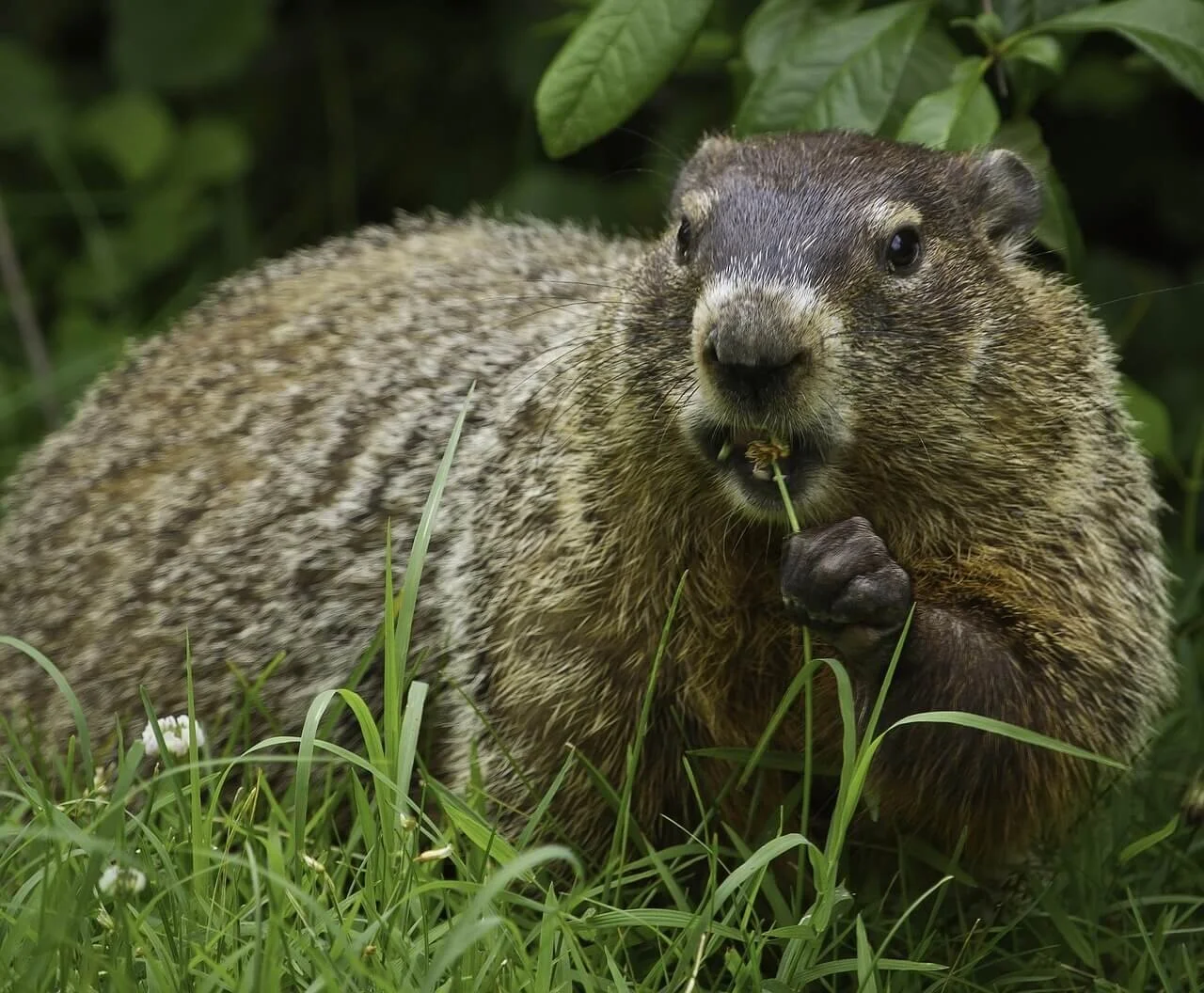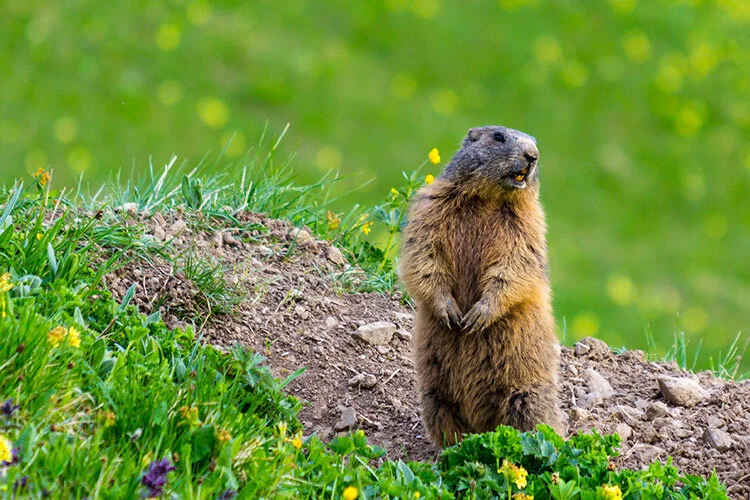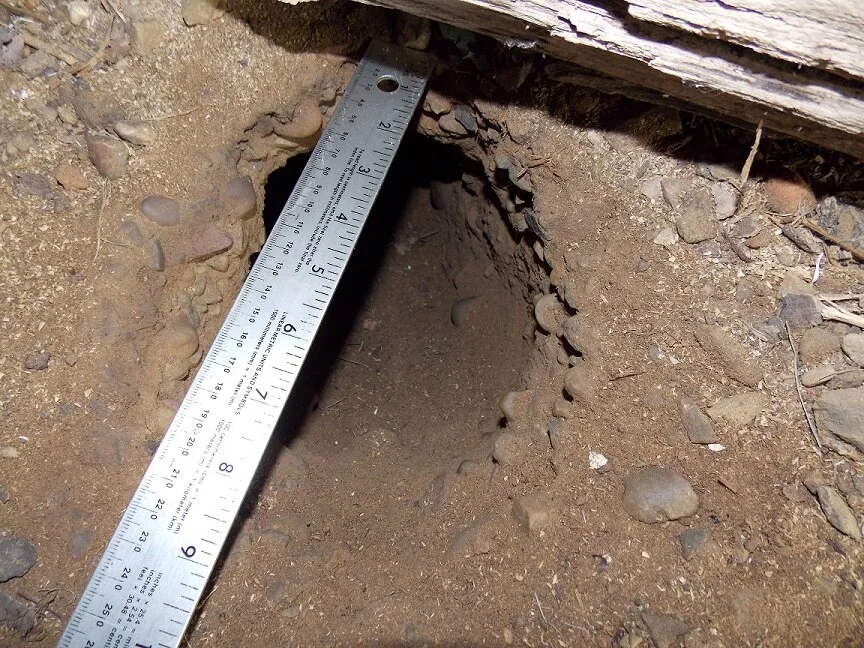Groundhog (Marmota monax)
Groundhog Biology
Groundhogs — also known as woodchucks, whistle pigs, or marmots — are stocky mammals with strong, short legs and short bushy tails. Their fur ranges from dark to light brown with very light guard hairs, making them sometimes look frosted. Their front feet have long, curved claws used for digging burrows. Groundhogs generally weigh between five and ten pounds, and males are usually slightly larger than females.
Groundhog Behavior
Groundhogs are also excellent diggers with dens ranging from simple and shallow dwellings, to extensive tunnel systems twenty-five to thirty feet long, and two to five feet deep, with two entrances. Groundhogs seldom venture more than a few hundred yards from their burrows. They have a keen sense of smell and hearing, helping to keep them safe from predators.
Groundhog Concerns
Groundhogs can cause major damage to homeowners and home gardeners. They love to eat vegetables and leave the soil weak in areas where they burrow. In extreme cases, groundhog burrows have even been known to damage the foundations of barns, garages, or homes.
Groundhog Control
Late winter/early spring is the best time for trapping groundhogs. The groundhogs alive in early spring are the adults that will produce the next generation later in the spring. Catching one in March could mean eliminating five in June. Early trapping also has tactical advantages, because the landscape is barren.




